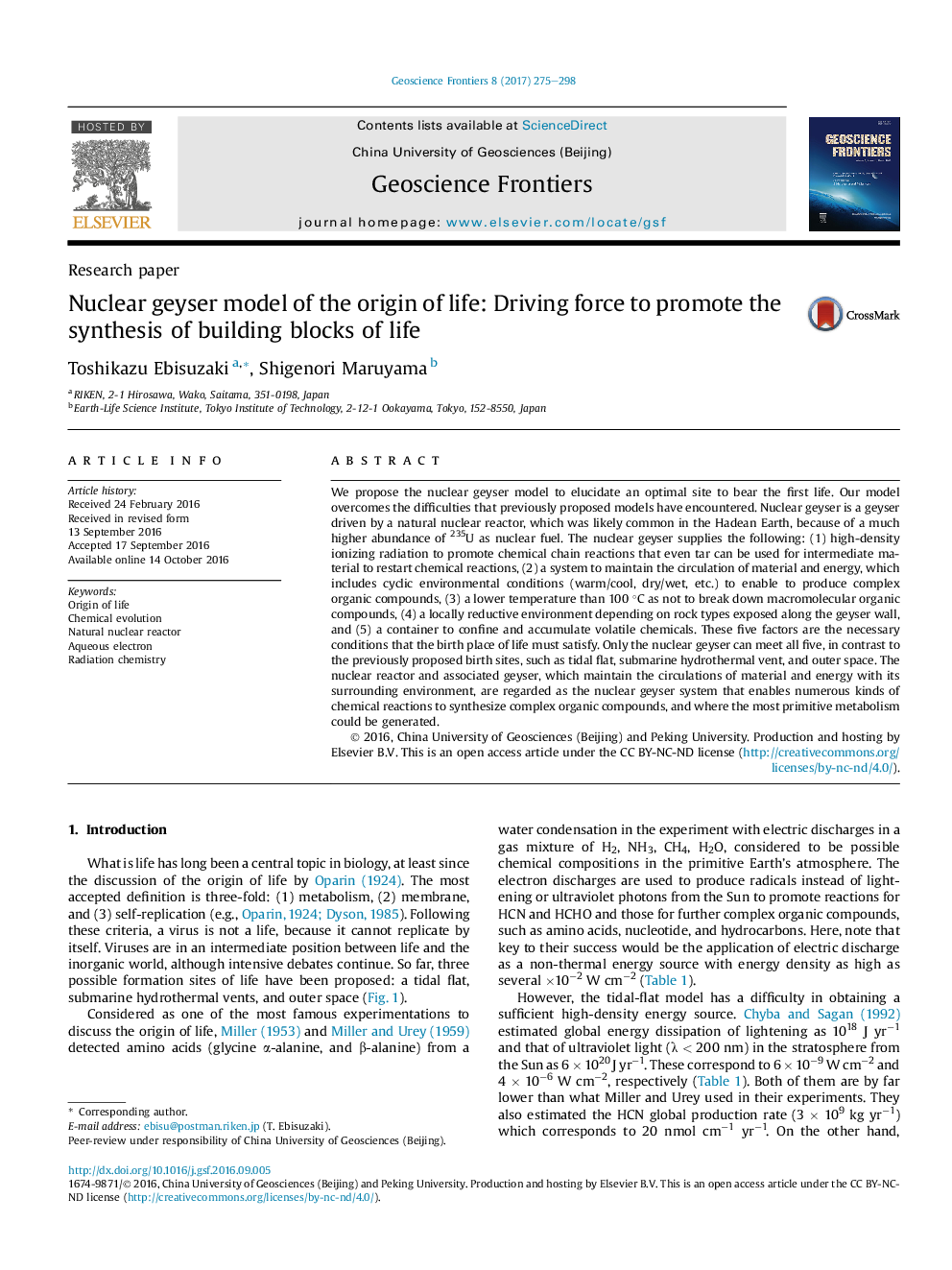| کد مقاله | کد نشریه | سال انتشار | مقاله انگلیسی | نسخه تمام متن |
|---|---|---|---|---|
| 5780269 | 1413813 | 2017 | 24 صفحه PDF | دانلود رایگان |
- A natural nuclear reactor continuously supplied energy and nutrients for life.
- Nuclear fuel 235U with the shorter half-life was richer in the past.
- Natural nuclear reactors were much common in Hadean Earth.
- Radiation from a natural nuclear reactor produced bio-essential compounds.
We propose the nuclear geyser model to elucidate an optimal site to bear the first life. Our model overcomes the difficulties that previously proposed models have encountered. Nuclear geyser is a geyser driven by a natural nuclear reactor, which was likely common in the Hadean Earth, because of a much higher abundance of 235U as nuclear fuel. The nuclear geyser supplies the following: (1) high-density ionizing radiation to promote chemical chain reactions that even tar can be used for intermediate material to restart chemical reactions, (2) a system to maintain the circulation of material and energy, which includes cyclic environmental conditions (warm/cool, dry/wet, etc.) to enable to produce complex organic compounds, (3) a lower temperature than 100 °C as not to break down macromolecular organic compounds, (4) a locally reductive environment depending on rock types exposed along the geyser wall, and (5) a container to confine and accumulate volatile chemicals. These five factors are the necessary conditions that the birth place of life must satisfy. Only the nuclear geyser can meet all five, in contrast to the previously proposed birth sites, such as tidal flat, submarine hydrothermal vent, and outer space. The nuclear reactor and associated geyser, which maintain the circulations of material and energy with its surrounding environment, are regarded as the nuclear geyser system that enables numerous kinds of chemical reactions to synthesize complex organic compounds, and where the most primitive metabolism could be generated.
226
Journal: Geoscience Frontiers - Volume 8, Issue 2, March 2017, Pages 275-298
